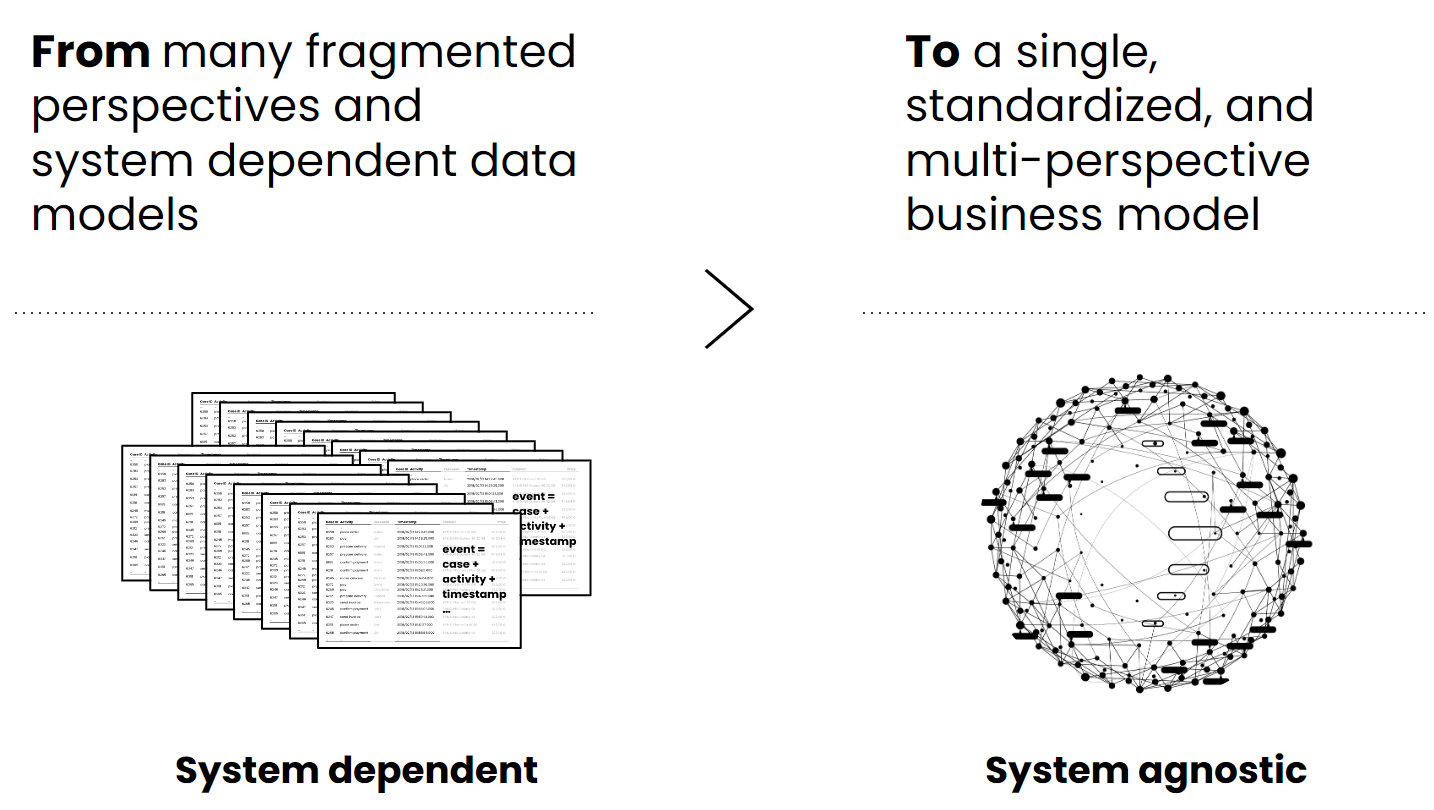Object-centric process mining overview
Object-centric process mining is a technology that enables the analysis of interrelated objects and events involved in business processes. An object is a representation of something connected to your business, and an event is a representation of something that happened to one or more of those objects. With object-centric process mining, events are related to objects instead of to a single case, making it possible to fully view complex and interacting processes from any angle.
A lot of objects and events are found across most businesses. In the Objects and Events module, you will find a set of prebuilt object types, event types, and relationships that are commonly used in business. These Celonis-created types and relationships make up the object-centric data model.
Each of your business processes involves some of the object types, event types, and relationships in the object-centric data model. Choose one or more of the Accounts Payable, Accounts Receivable, Order Management, Procurement, and Inventory Management business processes. Each process includes a perspective that identifies the object types, event types, and relationships involved for the process. Celonis applications use the perspective to access the objects and events created from your business data.
The object-centric data model can also be extended for your specific business needs and use cases. You can extend the Celonis object types by adding custom attributes and relationships to them. Or use the Celonis self-service tools to build your own custom object types, event types, and perspectives that include them. This allows you to model a digital twin of your business, or any specific business process that you want, and then make it available for object-centric process mining.
Important
To access objects and events and the object-centric data model, you'll need a Celonis license that includes object-centric process mining. If you can't see the Data > Objects and Events option in your Celonis environment, talk to your Celonis Account Executive to find out more.
Case-centric process mining and object-centric process mining
With traditional case-centric process mining, the objects and events involved in a single instance of a process (a case) are recorded all together in an event log that tracks the case from beginning to end. This fixed format lets you access and analyze processes, but it isn't very flexible and can lead to inaccuracies.
Object-centric process mining builds a more realistic picture. Objects exist outside of the processes that they are involved in, so they can be involved in different processes or in the same process more than once. Each event is identified as a single incident, which can involve one or many objects of different types. Object-centric process mining models the real world rather than the world as your business system stores it.
 |
Compared to an analysis from the perspective of a single business object, modeling with objects and events gives you a more flexible way to analyze complex and interconnected business operations. Once the extracted data from your source systems has been transformed into objects and events, they can be used to analyze multiple processes using different perspectives without needing to extract and transform the data again.
All of the information needed to construct an event log for a particular case is still held in the objects, events, and changes in the modeled digital twin of your business. When you need to use applications or views that were designed to analyze event logs, you can use a perspective to build event logs from the information in these objects, events, and changes. Celonis apps and views that require case-centric representations can use these event logs just like they would with a case-centric data model.
Tip
Find out more about objects and events, relationships, the object-centric data model, and perspectives in these topics.
If you’re getting started with object-centric process mining, the Celonis Academy course Object-Centric Process Mining: Foundations can help you understand the key terms and concepts. For deeper understanding, complete the Implement Object-Centric Process Mining training track to learn how to model objects and events.
When you’re ready to get started, Quickstart: Extract and transform your data into objects and events will help you set up your first Celonis process for object-centric process mining.